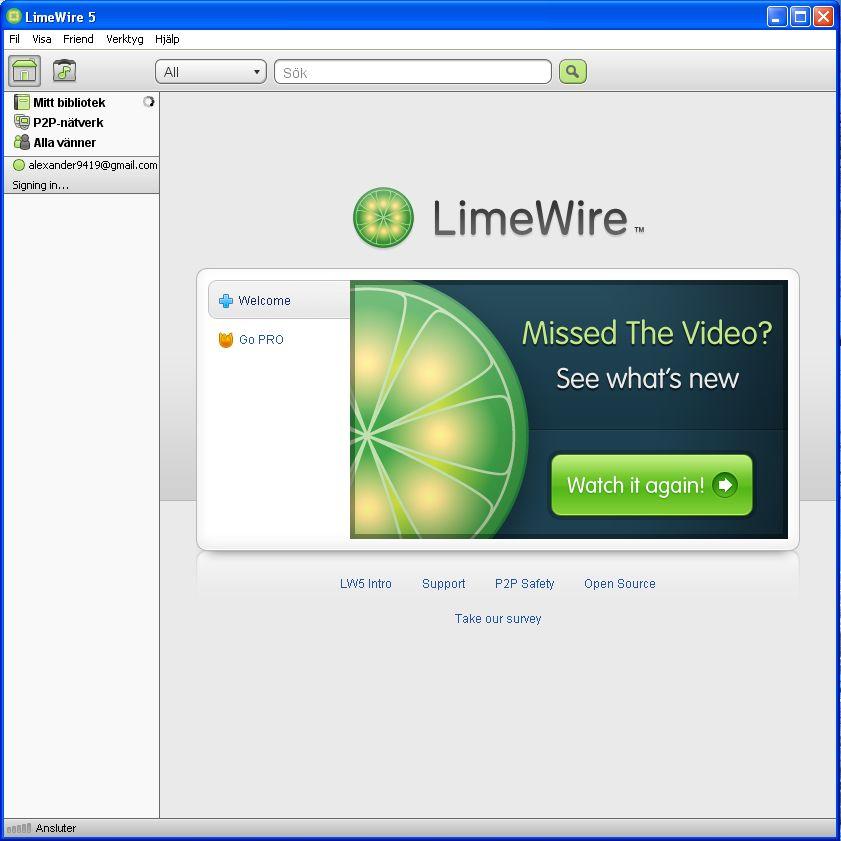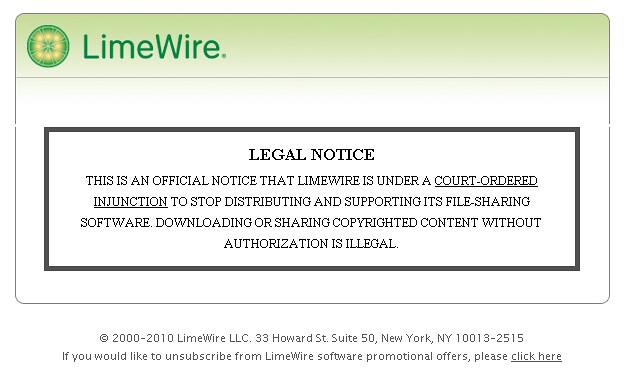
Limewire, once a popular file-sharing platform, provided users with the ability to share and download various media files effortlessly. Although the software is no longer in operation, many still seek guidance on how to use Limewire. In this informative article, we will provide step-by-step instructions on utilizing Limewire effectively, exploring its features, and ensuring optimal usage. Whether you are a new user looking to maximize your file-sharing experience or a former Limewire enthusiast seeking a trip down memory lane, this guide will offer valuable insights to help you understand and navigate this once-prominent software.
Introduction to LimeWire
LimeWire, once a popular peer-to-peer file sharing platform, provided users with a vast library of music, movies, and other digital content. Although LimeWire is no longer active, many people still wonder how to use this software and harness its potential. In this post, we will explore the basic steps involved in utilizing LimeWire effectively.
Download and Install LimeWire: Before diving into the world of LimeWire, you’ll need to download and install the software on your computer. Simply head to the official LimeWire website and locate the download section. Choose the appropriate version for your operating system, be it Windows or Mac, and initiate the download. Once the download is complete, run the installation file and follow the on-screen instructions to successfully install LimeWire on your computer.
Update LimeWire and Configure Settings: After installation, it’s crucial to update LimeWire to ensure you have the latest version with improved features and security patches. Open the LimeWire application and navigate to the settings menu. Look for the “Update” tab and click on it to initiate the update process. Once the update is complete, it’s time to configure your settings. Customize your download location, network connections, bandwidth usage, and sharing preferences according to your needs. Remember to enable any firewall exceptions necessary to allow LimeWire to function optimally.
Search and Download Content: Now that your LimeWire is up and running, it’s time to start searching and downloading files. The LimeWire interface provides a search bar where you can enter keywords to find the desired content. Whether it’s music, movies, or other files, LimeWire’s extensive database can cater to your needs. Upon entering a search query, LimeWire will display a list of available files matching your search criteria. Browse through the results, paying attention to file size, format, and the number of seeds (users sharing the file), which can indicate the download speed. Once you’ve made your selection, click on the file to begin downloading it.
Monitor Downloads and Prioritize Safety: Monitoring your downloads is crucial in ensuring a smooth and secure experience. LimeWire will display a ”downloads” tab, which allows you to view the progress of your ongoing downloads. Additionally, you can prioritize your downloads by adjusting the download order, allowing you to manage multiple files efficiently. While LimeWire provided access to a vast library, it’s essential to prioritize safety and frequently check downloaded files using antivirus software. Caution should be exercised when downloading copyrighted material, as it may infringe upon intellectual property laws.
Enable Sharing and Participate in the Community: LimeWire thrived on the concept of sharing, allowing users to contribute to the vast network of files. Whenever possible, contribute to the community by sharing your own files, promoting an inclusive and mutually beneficial experience. Furthermore, LimeWire incorporated features like chat rooms and user profiles, fostering a sense of community among its users. Engage with like-minded individuals, discuss interests, and exchange recommendations. Remember to respect others’ privacy and adhere to the platform’s guidelines while participating in these interactive features.
Despite LimeWire’s discontinuation, it retains a place in digital culture, serving as a reminder of the evolution of file sharing platforms and the impact they had on the internet landscape. Understanding how to use LimeWire can provide valuable insight into the history of peer-to-peer file sharing, as well as the subsequent shift towards legal alternatives. So, whether you’re curious about LimeWire’s functionality or seeking a nostalgic journey, follow these steps and explore the realm of LimeWire cautiously and responsibly.

Downloading LimeWire and Installing the Software
is a straightforward process that allows you to access a vast library of music, movies, and other downloadable content. Follow these steps to get started:
Visit the official LimeWire website: Go to www.limewire.com to download the software. Look for the download button or link on the homepage. LimeWire is compatible with both Windows and Mac operating systems.
Choose the appropriate version: Once you click on the download button, you will be redirected to a page with different versions of LimeWire available. Select the version that corresponds to your operating system.
Begin the download: After clicking on the version you want, the download will automatically begin. Depending on your internet speed, this process may take a few minutes. It’s important to note that LimeWire is a free software, so you should not be asked to provide any payment information during this step.
Install LimeWire: Once the download is complete, locate the installation file on your computer. Double click on the file to start the installation process. Follow the on-screen instructions to complete the installation. You may be required to agree to the terms of use before proceeding with the installation.
Launch LimeWire: After the installation is complete, you can launch LimeWire by either clicking on the desktop shortcut icon or searching for it in your programs or applications menu. When LimeWire opens, you will be prompted to create a username and password, or you can choose to use LimeWire as a guest. Creating an account will give you access to additional features and functionality, so it is recommended to create one.
Now that you have successfully downloaded and installed LimeWire, you can start exploring the vast collection of files available for download. Use the search bar at the top of the application to search for specific files or browse through different categories. To start a download, simply click on the file and choose the desired location on your computer where you want to save it.
Remember to exercise caution when downloading files from LimeWire and only download files from trusted sources. Always check the file’s details, such as user ratings and comments, before proceeding with the download. LimeWire also offers helpful features like file previews and a built-in media player, making it easier for you to enjoy your downloaded content.
Using LimeWire can be an enjoyable and convenient way to access a wide range of files, but always keep in mind copyright laws and the importance of respecting intellectual property rights. Enjoy your LimeWire experience responsibly, and happy downloading!

Navigating the LimeWire Interface: Search, Library, and Downloads
The LimeWire interface offers a user-friendly experience for searching, organizing, and managing your downloads. Familiarizing yourself with the key features will help you make the most out of this powerful file-sharing software. In this post, we will guide you through the main sections of the LimeWire interface: Search, Library, and Downloads.
Search: The search section is where you can find and download files from the LimeWire network. To begin your search, enter a keyword or phrase in the search box and click on the magnifying glass icon. LimeWire will then display a list of files that match your search criteria. You can refine your search by selecting specific file types or applying filters such as size or date. To start downloading a file, simply double-click on it. Keep in mind that downloading copyrighted material may be illegal, so always respect copyright laws.
Library: The library section is where you can organize and manage your downloaded files. LimeWire automatically categorizes your files into different tabs based on their types, such as audio, video, documents, or programs. You can easily find your downloaded files by navigating through these tabs. To preview a file, right-click on it and select “Preview.” LimeWire also allows you to create playlists, transfer files to portable devices, or even burn your files onto CDs. With such versatile management options, you can keep your downloaded files organized and easily accessible.
Downloads: The downloads section provides an overview of your ongoing and completed downloads. LimeWire conveniently lists your active downloads, displaying the file name, size, progress, and download speed. You can pause, resume, or cancel downloads at any time. Completed downloads are stored in the Library section for future access. LimeWire ensures fast and reliable downloads by utilizing a combination of peer-to-peer technology and multiple sources for each file. This means that you can enjoy efficient downloading while exploring a vast range of files shared by the LimeWire community.
Chat and Community: LimeWire is not only a file-sharing program but also a social platform. Within the LimeWire interface, you can join chat rooms and engage in conversations with other LimeWire users who share your interests. Exchanging experiences, tips, or even discovering new files becomes more accessible and enjoyable when connecting with like-minded individuals. LimeWire embraces the community aspect of file sharing, promoting a diverse and interactive platform for music, movies, software, and more.
Settings and Options: LimeWire offers a range of customizable settings and options to suit your preferences. You can access these features through the Preferences menu, which allows you to configure network settings, adjust bandwidth allocation, enable or disable sharing, and establish download limits. Additionally, LimeWire provides advanced features, such as firewall configuration for optimal connectivity and advanced search options for more precise queries. Exploring and adjusting these settings will enhance your LimeWire experience and tailor it to your specific needs.
By mastering the LimeWire interface, you can navigate through the expansive library of shared files, manage your downloads effectively, and engage with fellow LimeWire users. Remember to always abide by copyright laws and respect the intellectual property of others. With LimeWire, you can embrace the world of file sharing while enjoying a user-friendly interface and powerful features.
Maximizing LimeWire’s Features: Filtering, Previewing, and Organizing Downloads
In this post, we will dive into the world of LimeWire and explore how to maximize its features to enhance your downloading experience. LimeWire is a popular peer-to-peer file-sharing application that allows users to share and download a wide range of files, including music, videos, and documents. By leveraging its filtering, previewing, and organizing capabilities, you can not only find the files you’re looking for more effectively but also ensure a seamless and organized downloading process.
First and foremost, let’s talk about filtering. LimeWire offers various ways to filter your search results, making it easier to find the files you want. One way to achieve this is by using keywords. Simply enter relevant keywords into the search bar, and LimeWire will display results that match your query. Additionally, you can narrow down your search by applying filters such as file type, size, or even the number of sources available. To make the most out of this feature, use specific keywords and apply filters that align with your preferences.
Previewing files before downloading them is another handy feature LimeWire offers. Instead of downloading an entire file to realize it’s not what you expected, LimeWire allows you to preview certain types of files. From audio files to videos and images, you can quickly check their quality and content before committing to the download. To preview a file, simply right-click on it and select the “Preview” option. This allows you to save time and bandwidth by only downloading the files that meet your requirements.
Organizing your downloads can be a daunting task, especially when dealing with a large number of files. Fortunately, LimeWire provides several ways to keep your downloads organized. One way to do this is by creating custom folders for different file types or categories. By right-clicking on a downloaded file and selecting the “Move to Folder” option, you can easily categorize your downloads. Another helpful feature is the ability to set download locations for different file types. For example, you can choose to save all music files in the ”Music” folder and all videos in the “Videos” folder. This not only keeps your files organized but also saves you time when locating them later.
Let’s now dive into the world of HTML tables and WordPress styling. By using HTML tables, you can create a visually appealing and organized way to present information. For example, you can create a simple table that showcases the different file types supported by LimeWire, along with their corresponding icons and descriptions:
| File Type | Icon | Description |
|---|---|---|
| MP3 | Audio file format commonly used for music | |
| MPEG | Video file format used for high-quality videos | |
| Portable Document Format used for documents |
By capitalizing on LimeWire’s filtering, previewing, and organizing features, you can streamline your downloading process and make the most out of this powerful file-sharing application. Take advantage of its advanced search capabilities, preview files before downloading, and keep your downloads organized effortlessly. With LimeWire, the possibilities are endless, and your downloading experience is about to become a whole lot better. So, go ahead and start maximizing LimeWire’s features today!
Ensuring Safe and Secure File Sharing on LimeWire
is crucial to protect your computer and personal data. LimeWire, a peer-to-peer file-sharing software, allows users to download and share various files, such as music, videos, and documents. While LimeWire can be a useful tool, it is important to follow certain precautions to ensure your online safety and security.
To use LimeWire safely, it is recommended to:
- Download LimeWire from the official website: Ensure that you are downloading LimeWire from its official website to avoid fake or malware-infected versions.
- Keep your antivirus software up to date: Regularly update your antivirus software to detect and eliminate any potential threats that may enter your system through LimeWire.
- Scan downloaded files before opening: Use your antivirus software to scan any files you download from LimeWire before opening them. This will help identify any potentially harmful files.
- Enable your computer’s firewall: Enabling your computer’s firewall can provide an additional layer of protection against unauthorized access and potential threats from LimeWire.
Furthermore, it is important to understand the risks associated with LimeWire and take extra precautions:
- Be cautious of file sources: When downloading files from LimeWire, only trust reputable and verified sources. Unverified or suspicious sources may contain infected or compromised files.
- Be aware of copyright infringements: Sharing copyrighted files without permission can lead to legal consequences. Ensure you are only sharing and downloading files that you have legal rights to.
- Monitor your downloads: Regularly review the files you have downloaded from LimeWire. Delete any files you no longer need to minimize the risk of accidental opening or spreading of malware.
In conclusion, using LimeWire can be convenient for file sharing, but it is crucial to prioritize your online safety and security. By following these guidelines, you can minimize the risks associated with LimeWire and enjoy a safe and secure file sharing experience.
Q&A
Q: What is Limewire?
A: Limewire is a peer-to-peer file-sharing program that allows users to exchange various files, such as music, videos, documents, and images with other online users.
Q: How does Limewire work?
A: Limewire operates on the Gnutella network, which creates a decentralized and distributed network of computers. Users connect to this network and can search for files that others have made available for sharing. When downloading a file, you receive data from multiple sources simultaneously.
Q: How can I install Limewire on my computer?
A: To install Limewire, you can visit the official website and download the installation file. Once downloaded, double-click the file and follow the on-screen instructions to complete the installation process.
Q: Is Limewire free to use?
A: Yes, Limewire is free to download and use. However, keep in mind that some versions might require a voluntary donation to unlock specific features.
Q: How can I search for files on Limewire?
A: After launching Limewire, you will see a search bar at the top of the program’s interface. Simply enter the name of the file you are looking for, and Limewire will display relevant results based on your search query.
Q: Is Limewire safe to use?
A: Using Limewire can pose certain risks. Since it is a peer-to-peer network, it is possible to encounter files infected with viruses or malware. It is recommended to have updated antivirus software and exercise caution when downloading and opening files from unknown sources.
Q: Can I share my own files on Limewire?
A: Yes, Limewire allows you to share files with other users. Simply select the files you want to share and add them to your “shared folder” within the program. Other users will then have access to those files when they perform a search.
Q: Is it legal to download copyrighted material through Limewire?
A: Downloading copyrighted material without proper authorization is illegal and constitutes copyright infringement. It is important to respect intellectual property rights and only download or share files that you have the legal right to do so.
Q: Are there any alternatives to Limewire?
A: Yes, several alternatives to Limewire exist, such as FrostWire, BearShare, and uTorrent. These programs offer similar functionality for file sharing, but it is always recommended to research and choose a reliable and legally compliant option.
Q: Can I use Limewire on any operating system?
A: Limewire is compatible with Windows, Mac OS X, and Linux operating systems, making it accessible to a wide range of computer users.
Disclaimer: This article is solely for informational purposes, and we do not endorse or promote the sharing of copyrighted material without proper authorization. Always use file-sharing programs responsibly and in compliance with applicable laws. In conclusion, Limewire was once a popular file-sharing software that allowed users to easily download and share various types of media files. However, with its discontinuation in 2010 and the emergence of more legitimate and secure alternatives, it is no longer recommended for use.
While Limewire offered a vast library of files to choose from, it also posed significant risks to the user’s privacy and security. The prevalence of malware-infected files, along with the potential for legal consequences due to copyright infringement, made Limewire a questionable option, even during its heyday.
Today, there are numerous legal and reliable alternatives available for downloading and sharing files. Platforms like Spotify, Apple Music, Netflix, and Amazon Prime provide safe and authorized access to a wide range of media content. Additionally, online marketplaces for purchasing music, movies, and books have become popular, ensuring artists and creators are properly compensated for their work.
It is essential for users to prioritize their safety and legality while navigating the digital landscape. Staying informed about copyright laws and respecting the rights of content creators is crucial. By embracing legitimate platforms and resources, we contribute to a fair and sustainable artistic ecosystem.
While the golden age of Limewire may be a part of internet history, the lessons learned from its rise and fall still resonate today. Let us move forward, embracing innovation and ensuring that our online activities are both ethical and secure. Remember, the choices we make online can have lasting impacts, so let us choose wisely.






